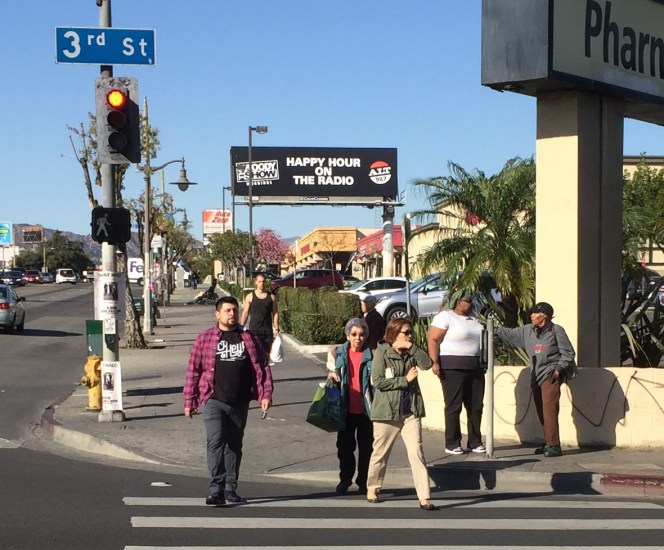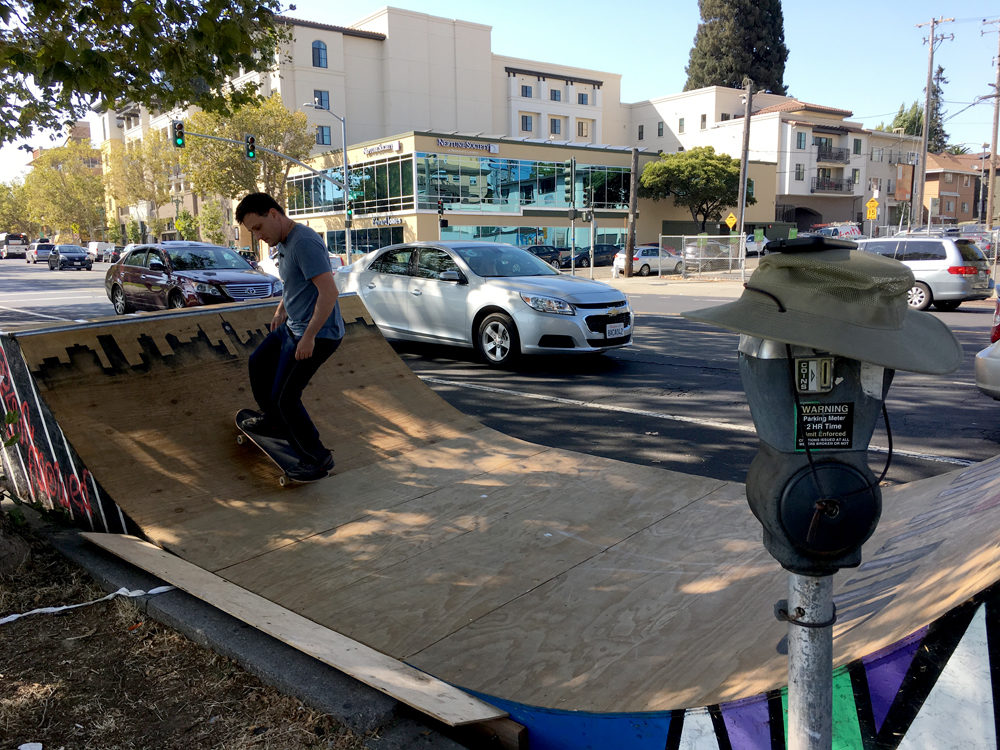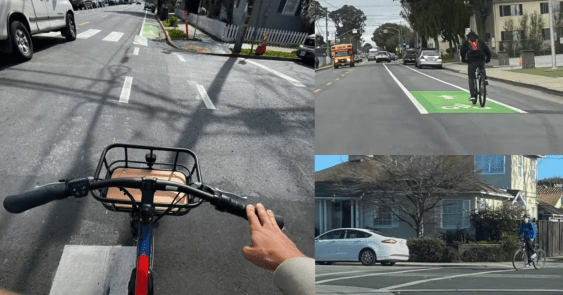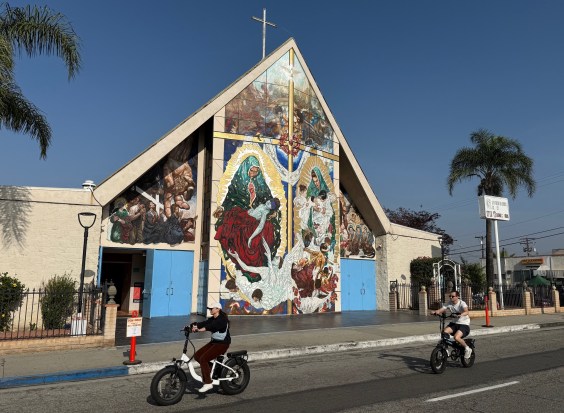
I was walking my daughter to the park a few weeks ago, when I was happy to spot new pedestrian head-start signals at the intersection of Third Street and Vermont Avenue in Koreatown. My daughter looked confused. She saw that the traffic light was still red, but the little walking person icon was also lit, telling us pedestrians we could cross. She didn't want to cross on the red light. I explained to her that this was a special light that gave pedestrians a head-start.
As I bicycle and walk around L.A., I am happy to encounter more and more of these pedestrian head-start signals on L.A. streets. My daughter and I cheer them when we spot them.
If readers are unfamiliar with the wonkily-named "Leading Pedestrian Interval" - sometimes called a pedestrian head start - watch the Streetfilm above for a basic explanation. Basically, LPIs allow pedestrians to start walking a few seconds (typically about four seconds in L.A.) during drivers' red light phase. This makes pedestrians more visible, hence less likely to get hit by turning drivers.
CityLab makes the point that LPIs are "incredibly cheap" especially compared to other safety measures like concrete bulb-outs. They also have a proven track record, with several studies showing they are effective in reducing traffic deaths. A Pennsylvania study credits LPIs for a 58.7 percent reduction in pedestrian-vehicle crashes at LPI intersections. A New York City study (page 52) found that a 7-second LPI resulted in 37 percent reduction in pedestrian and cyclist deaths and serious injuries.
In a statement to SBLA, L.A. Transportation Department General Manager Seleta Reynolds wrote that "LPIs are a smart solution that will reduce crashes between people driving and walking by up to 60 percent. We're aggressively rolling these out where they will have the biggest impact along our High Injury Network."
LADOT installed its first pilot LPIs downtown in 2014. This was followed by several more downtown in 2016.
According to LADOT Vision Zero Deputy of External Affairs Lilly O'Brien-Kovari, LADOT has installed 67 LPIs as of last week. The department installed more than 60 LPIs in calendar year 2017 (including updates to all the downtown ones), and has plans for 87 more LPIs to be installed in 2018. The installations are focused on many of the 40 priority corridors in the city's 2017 Vision Zero Action Plan. Locations where LPIs are already installed include numerous consecutive LPIs at intersections on Koreatown's 3rd Street, from Vermont Avenue to Normandie Avenue, and Lincoln Heights' North Broadway, from Mission Road to N. Spring Street. O'Brien-Kovari stresses that LPIs are part of a suite of interventions - speed limit signs, painted bulb-outs, etc. - on these Vision Zero network streets.
O'Brien-Kovari reports that, for LADOT, installation costs vary. For many intersections, LPIs require no new hardware, so the only cost is staff time. Sometimes, they require signal upgrades. She also states that LPIs are now part of the department's procedures for installing new traffic signals, a couple dozen of which are slated for installation in 2018. LADOT evaluates turning traffic and pedestrian activity at new signals, and includes LPIs where warranted.
Streetsblog readers - have you spotted LPI head-start signals as you move throughout L.A.? What L.A. intersections are they needed at? And, readers outside of L.A. City, what other L.A. County cities installing these?






